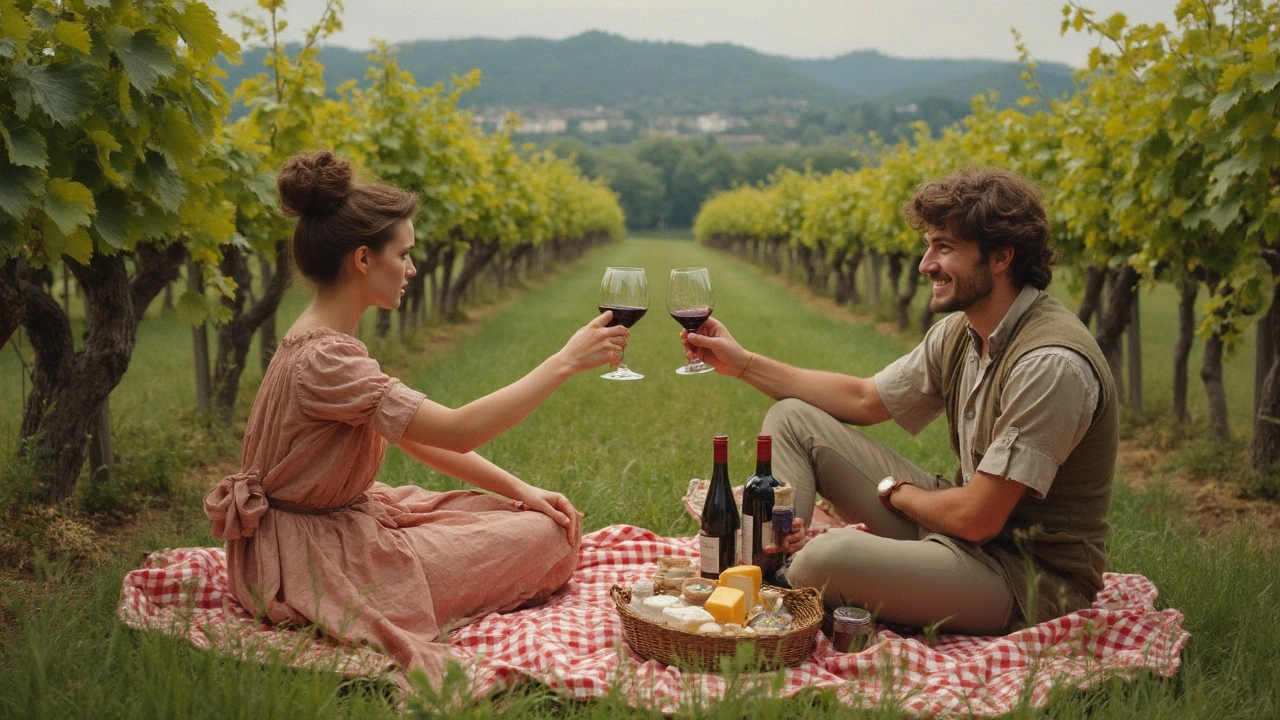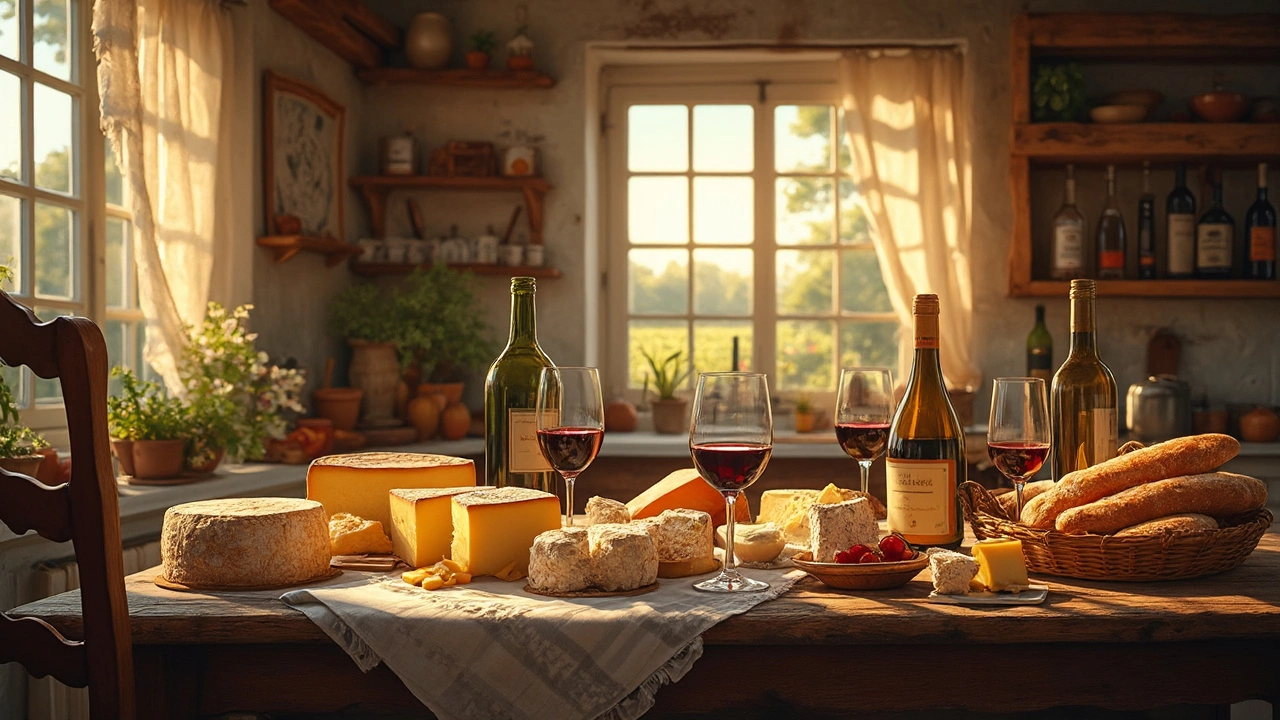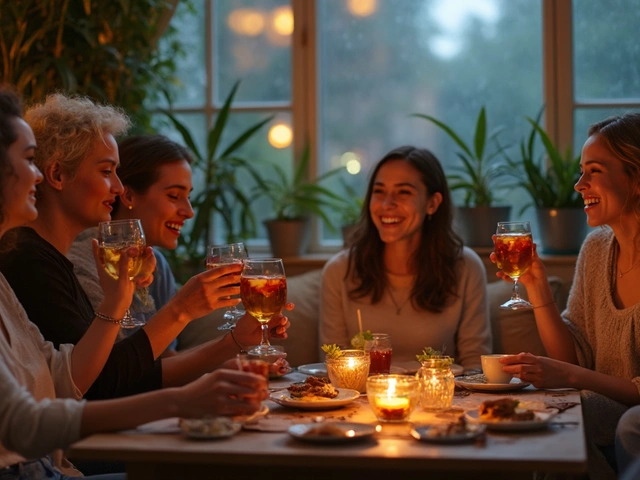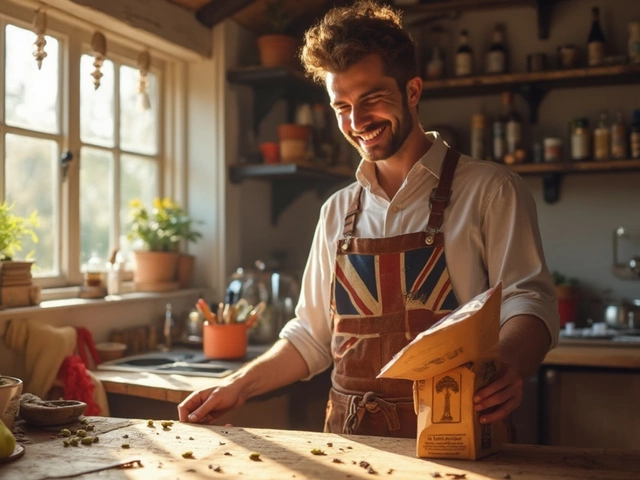Ever think about why cheese and wine just seem to go together like bread and butter? Especially in France, it's almost a rite of passage. But do the French really eat cheese with wine as often as we imagine? Short answer—yep, they do, and they've got it down to a fine art.
Now, it's not just about throwing any cheese on a plate and popping a cork. There's a well-thought-out tradition behind the pairings, one that'll make your taste buds do a happy dance if done right. So, why do these two favorites go hand in hand so beautifully? It comes down to balancing flavors, textures, and even aromas. When these elements play off each other in just the right way, it's culinary magic.
- French Tradition of Cheese and Wine
- Why Cheese and Wine Pair Well
- Popular French Pairings
- Tips for Perfect Pairings
- Regional Differences
- Common Mistakes to Avoid
French Tradition of Cheese and Wine
France is practically the mothership of French cheese and wine. It's a cultural melody that's been fine-tuned over centuries. Back in the day, wine wasn't just a beverage; it was a necessity, partly because the water wasn't always safe to drink. As for cheese, it’s deeply rooted in rural tradition—think of it as the farm folks' way of packing nutrition into a portable form.
Fast forward to today, and you'll see cheese and wine at practically every French dinner table, especially during special occasions. But what's it all about? It's all in the pairings. They don't just throw a block of brie with a random red and call it a day. Pairings are planned, considered, like a little symphony on your palate.
Why It Matters
Why get meticulous about pairings? Because when you match the right wine pairing with the right cheese, you elevate both. The flavors dance and enhance each other. For instance, a creamy cheese like Camembert goes delightfully well with a light, fruity wine. It's about harmony, not clashing flavors.
Common French Pairings
In typical French fashion, there are some renowned cheese and wine combos. Take Sancerre with goat cheese. The tangy flavor of goat cheese pairs exquisitely with the crispness of Sancerre, cutting through the cheese's creamy texture.
Also, there's the classic Roquefort with Sauternes. Here, the sweet dessert wine balances the saltiness of the blue cheese, creating a flavor party in your mouth. It's no coincidence these combinations have stood the test of time—they just work.
Here's a quick look at how varied the cheese and wine scene is in France with some known combos:
| Cheese | Wine |
|---|---|
| Brie | Champagne |
| Comté | Chardonnay |
| Croton | Sauvignon Blanc |
So, the next time you're looking to impress—or simply want to spoil yourself with some of the best French cuisine—consider putting some thought into your cheese and wine pairing. You'll be amazed at how the right mix can elevate an otherwise simple meal.
Why Cheese and Wine Pair Well
Ever wonder why cheese and wine are such a famous duo? Well, it's all about the magic that happens when certain flavors meet. When you pair the right cheese with the right wine, it's like setting up two best friends. They enhance each other's qualities, making the whole experience a lot tastier.
The Role of Tannins and Acidity
Tannins in wine, those compounds that give red wine its astringency, really complement the fat and protein in cheese. The fat mellows the tannins, making the wine feel smoother, while the acidity in wine can cut through the richness of cheese, cleansing your palate between each bite. On the flip side, a strong, tangy cheese might need a wine with a bit of sweetness to balance it out.
Flavors and Textures in Harmony
A big part of this pairing game is balancing flavors. A soft, creamy brie goes beautifully with a crisp white wine like Chardonnay, while a hard cheese like aged gouda pairs well with a full-bodied red like Cabernet Sauvignon. The flavors kind of bounce around in your mouth, highlighting the best qualities in each other.
The Science Behind the Pairing
This might surprise you, but there's some science here too. Researchers have found that pairing cheese with wine affects taste perception. Cheese can influence how sweet or bitter we find the wine—and vice versa. This shifts the sensory experience, making each sip and bite new and exciting.
Pairing properly involves a bit of experimenting, but once you get the hang of it, it's a lot of fun. Understanding these basic principles will help you make better pairing choices, impress your friends, and, most importantly, enjoy both cheese and wine to the fullest.
Popular French Pairings
Alright, let's dig into what makes French cheese and wine pairings legendary. France isn’t just known for its breathtaking views and iconic landmarks. Its food culture is a major player, and wine and cheese are right at the center of it. So, what are some popular French pairings you're likely to stumble upon?
Camembert and Calvados
Camembert is first up on our list. This creamy, soft cheese has a rich flavor that just melts in your mouth. The norm in Normandy is to pair it with Calvados, a local apple brandy. The apple notes from Calvados complement Camembert's creamy taste perfectly, creating a balance you won’t forget. Give it a shot next time you're looking for something different.
Brie and Champagne
Is there anything more classic than Brie? This soft cheese is a staple in French households, renowned for its mild but buttery flavor. People often pair Brie with a glass of bubbly Champagne for a sophisticated touch. The bubbles cut through the richness, leaving a delightful taste in your mouth.
Roquefort and Sauternes
How about Roquefort? This blue cheese packs a punch with its strong and tangy flavor. Some might initially find it intense, but when you pair Roquefort with a sweet wine like Sauternes, prepare for a taste explosion. The sweetness of the wine balances the zing of the cheese. It's like they were made for each other.
Comté and Vin Jaune
Comté, a hard cheese with a nutty aroma, is best known in Eastern France. Pairing it with Vin Jaune, also from the Jura region, is the way to go. The oaky and nutty flavors of the wine seem to just fit hand-in-glove with Comté, making each bite and sip better than the last.
Epoisses and Burgundy
Finally, there's Epoisses. It’s for the bold because this cheese is super strong and unmistakably smelly. But what it lacks in aroma, it makes up for in taste when paired with a Pinot Noir from Burgundy. The wine’s lightness softens the cheese’s funk, creating a brilliantly tasty pairing.
There you have it—a tour through some of the most popular French pairings. Next time you're looking to impress, try any of these. You’ll see they’re famous for a reason!

Tips for Perfect Pairings
Let's dive into some easy, actionable tips to get your cheese and wine game on point, like those seasoned French folks.
Match Intensity and Flavors
First off, keep it simple. Pair similar intensity levels. A bold red wine deserves a strong cheese to match, like a hearty Roquefort or an aged cheddar. For a delicate white wine, opt for something gentler like brie or goat cheese. It's all about harmony.
Think about Texture
Texture can be a game-changer. Creamy cheeses pair wonderfully with wines that can cut through the fat, like a crisp Sauvignon Blanc. Hard cheeses, on the other hand, have a crunch and are great with tannic wines.
“The bitterness of the wine should not overpower the subtlety of cheese.” — Bernard Pivot
Experiment with Regions
When in doubt, go local. Wines and cheeses from the same region often play well together because they share a common terroir. You might find pairing a French Burgundy with Époisses cheese works wonders.
Mind the Temperature
Temperature impacts taste big time. Serve cheese at room temperature to bring out its full flavor, and make sure wine is the right temperature too. Nothing kills the mood like an ice-cold red.
- Red wine: Slightly below room temperature
- White wine: Chilled but not icy
- Cheese: Room temperature
Don't Forget the Basics
Lastly, remember that grabbing a chunk of bread or some fresh fruit can help clear your palate and enjoy each pairing anew. It's a simple trick, but a handy one.
With these wine pairing tips, your gatherings are set to impress. Enjoy your culinary adventure, and as the French say, bon appétit!
Regional Differences
When it comes to cheese and wine pairings, France is like a quilt stitched with diverse traditions and tastes. Each region has its own spin, so you could say there's not a one-size-fits-all approach. This means exploring various areas is like uncovering little treasures of flavor.
Bordeaux: Where Red is King
Bordeaux is renowned for its rich, full-bodied reds. Imagine pairing these wines with local cheeses like Ossau-Iraty, a semi-hard sheep's cheese. The nuttiness of the cheese works wonders with the deep, structured flavors of Bordeaux's reds. If you ever find yourself in Bordeaux, don't skip this classic combo.
The Charm of Burgundy
In Burgundy, it's all about Pinots and Chardonnays. The soft, creamy textures of Époisses de Bourgogne, a stinky yet delicious cheese, go hand in hand with the region's elegant reds. Alternatively, a crisp white Chardonnay paired with a tangy goat cheese like Charolais will have you reaching for more.
The Loire Valley's Love for Whites
The Loire Valley favors white wines like Sancerre and Muscadet, which pair impeccably well with regionally produced goat cheeses such as Crottin de Chavignol. The acidity of the wine complements the creamy yet slightly tart flavor of the cheese, a perfect duo signaling springtime on a plate.
These regional differences make exploring French cuisine really exciting. Whether you're in the mood for red, white, or bubbly, there's a quintessential match waiting for you across the different sectors of wine country.
Common Mistakes to Avoid
Getting into cheese and wine matching can feel a bit overwhelming, but don’t sweat it. Everybody makes mistakes, even the veterans! The good news is once you know what not to do, you’re halfway there to enjoying the perfect wine pairing.
Ignoring the Intensity
One of the first things to watch out for is pairing a strong-flavored French cheese with a delicate white wine. It's a mismatch, like trying to hear a whisper in a rock concert. Strong cheeses like Roquefort demand a robust red or a sweet dessert wine, while milder cheeses sing with a crisp white wine.
Serving Cheese Too Cold
Certainly, serving cheese straight out of the fridge is a common blunder. Cheese, like wine, has nuances that reveal themselves best at room temperature. Allow about an hour after taking it out of the fridge before you plan to serve. This small step can really amp up your cheese-tasting experience.
Overloading the Platter
The temptation to show off a myriad of cheeses can be strong—everybody loves a variety, right? But too many different kinds can confuse the palate and overshadow each other. A good rule of thumb is sticking to three to five types per occasion. Less is more!
Neglecting Regional Pairings
Regional differences can actually be your best guide. If you're ever in doubt about what wine to pair with a particular cheese, think local. Often, cheeses and wines from the same region have grown together, flavor-wise, and naturally complement each other.
Skipping the Taste Test
Don't forget the golden rule before your guests arrive: always give your pairings a trial run. This will iron out any wrinkles and confirm your choices align with your taste buds. Trust me, it’s way better to find out privately that your wine pairing isn’t quite right.
Cheese and wine are a match made in heaven, but avoiding these pitfalls will help make your journey through French cuisine enjoyable and enlightening. With practice, you'll be pairing like a true Francophile.


